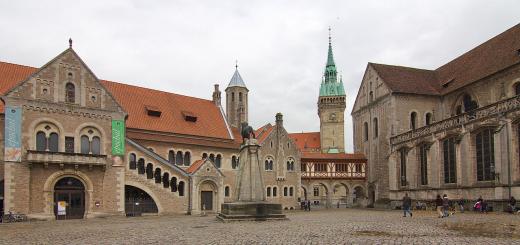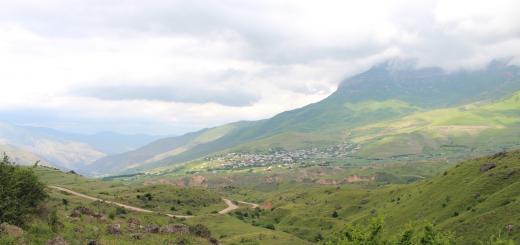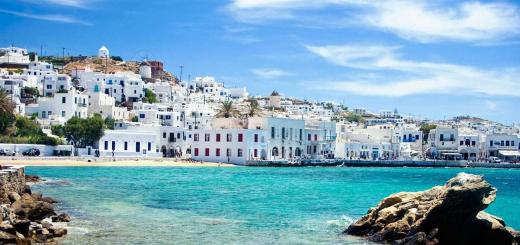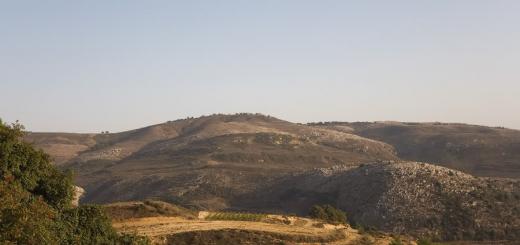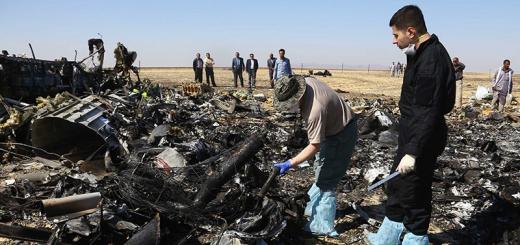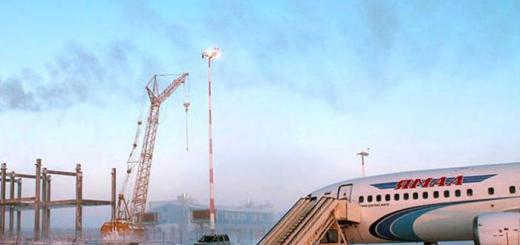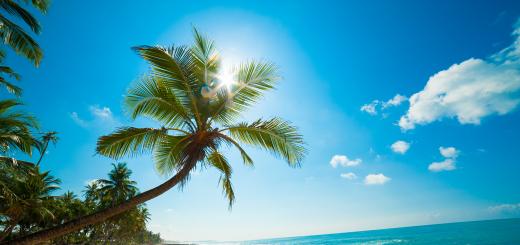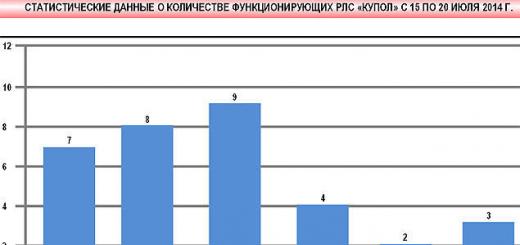The Vatnajökull glacier, which is the largest in Iceland, demonstrates at its full size that not everything is so neglected in Icelandic society, and some words can be pronounced even by a non-Icelandic. And a well-pronounced word cannot carry something bad in itself.
So it happened with Vatnajökull. Translated from Icelandic, it means "giving water". And with this precision, characteristic of the Icelandic language, it is difficult to argue, especially in the summer.
Starting in spring, the glacier begins to turn limp and give out tons of water for itself, which rushes through numerous tunnels to the sea-ocean, in order to dilute at least a little unnecessarily salt water thereof.
It happens, of course, that some piece of ice falls from the shore into the sea water, not having time to melt. But all this only decorates the coastal landscape. In addition, hard workers wind and currents, quickly pick up and carry the piece of ice into the sea, where it gets beautiful name: iceberg.

By summer, the sun begins to bake more and more and this affects the shape of the ice. In some places it forms impenetrable hummocks, and in some places a bizarre figure. By the way, due to the strong waviness of the surface of Vatnajökull, excursions around it did not gain wide popularity.
And without an experienced guide, walking along it is out of the question. Because to fall somewhere in the direction of the earth's core, it is possible with a high probability.

The most beautiful thing that you can see here is undoubtedly the caves. For years, the water sharpened numerous passages under the enormous mass of ice. Numerous tunnels on a sunny day are a fabulous sight. Due to the different thickness and structure of the ice, the colors of blue and light blue shimmer like the Northern Lights.

The caverns come in different heights and widths, but they all serve the same purpose: to let melted water flow out. In some places, overhead you can see ice that is a thousand years old.
It is particularly blue and clean. Visiting such caves usually takes place from December to March, since in summer it is dangerous to be not only under the glacier, but also next to it.

The Vatnajökull glacier covers an area of over 8,000 square kilometers. The average thickness of its ice sheet is 400-600 meters.
The maximum thickness is over 1000 meters. According to the latter indicator, the glacier ranks first in Europe. And in terms of total area, he also ended up in the top three, triumphantly closing it.


The glacier itself, in support of its name, is the source of water for many glacial lakes, the most famous of which is the Jokulsarlon glacial lagoon.
It was formed on the coast in the first half of the 19th century, and due to the rapid melting of the glacier, it has grown by now to 18 square kilometers, with a depth of 200 meters. Search for cheap hotels.

How to get there.
There are several ways to get to Vatnajökull National Park. But initially you need to choose the place from which you will begin to explore the park.
The main point for receiving tourists heading towards the glacier is the city of Höbn. It can be reached by plane, bus and sea from Reykjavik. The distance between cities is 326 kilometers.
It is better to move around the park as part of excursions or in a rented car. These services are available in Höbn.
Iceland's glaciers cover 11.1% of the country's total land area and have a significant impact on the island's landscape. There are 13 large glaciers, among which the Vatnajökull glacier, the largest glacier in the country, occupies the first place in popularity among tourists. On the map below, you can see Iceland's glaciers in the form of white spots, a huge white spot is Vatnajökull:
Photo of the glacier tongues, taken from above:

The Vatnajökull glacier in all its glory:

Huge blocks of ice are in constant motion imperceptible to the eye. The glacier slowly slides down and melts - this is clearly evidenced by the cracks on the ice of the thawed lake:

At the foot of the southern tongue of the Vatnajökull glacier, between the Skaftafell National Park and the city of Höbn, there is a unique glacier lagoon, Jokulsarlon, whose depth reaches 200 m. The lake appeared in 1934-1935. and as a result of the melting of the glacier, today it has grown to 18 sq.m.



The coast of the Jokulsarlon glacial lake, formed by solidified lava:

A block of ice in the rays of sunset:

It is noteworthy that there are two more glacial lakes near Lake Jokulsarlon.
The wonders of nature associated with the glacier do not end there. In the Vatnajökull glacier, the Kverkfjöll cave was formed due to hot springs under the ice. In the 1980s, this cave was measured: it turned out to be 2.8 km long and 525 meters wide.


Iceland Landscapes
Summing up the sights of Iceland, I bring to your attention a variety of landscape photos of this country, in order to make sure once again that Iceland is extraordinary, and its landscapes sometimes resemble the terrain of other planets from science fiction films.
Young lava fields on which a new ecosystem is being formed:

Torsmirk Valley:

Mount Valakhniukur in the Torsmork Valley:

Flocks of fulmars nest in the Torsmirk Valley in the Stackholt Gorge at an altitude of 100 meters above sea level.
Fool in flight:

Speaking of birds, it is impossible not to mention the bird called "dead end", of which there are quite a few in Iceland. This bird with an original color is interesting because, when chasing a fish, it dives and swims under water, using both its wings and legs.
Dead end caught a fish:

Let's continue the contemplation of the volcanic landscapes:


Atlantic coast near Vic village, from where the Three Trolls cliffs can be seen:

Rocks "Three Trolls":

Vik Village (South Iceland):

In the villages of Iceland, these well-fed sheep are raised:

Separately, it should be said about horses: in Iceland, all horses are very miniature, this is a special breed of "Icelandic pony", originating from the mixing of Northern European forest ponies with Celtic ponies brought by settlers to the island in the 9th century.

These small but very hardy horses for a long time in Iceland were the only means of transportation, transportation of goods and even ferrying across water bodies (Icelandic ponies swim great), and with their help, field work was carried out.

Icelandic ponies unmistakably find their way home, no matter how far they go, so after the annual drives of the sheep, the farmers who are busy sorting them often release the horses, and they themselves return to their native valleys.







Coast near the town of Husavik:

The town of Husavik is located in a sea bay ideal for whale watching and fishing. Ships with tourists ply along the bay in search of whales. It happens that during the whole day it is not possible to see a single whale, but on another day you can find a variety of animals performing unimaginable tricks.

Shallow water of the Khvita river flowing through the gorge:



And finally, another feature of Iceland is the northern lights:

If you decide to travel around Iceland by car, then the optimal route is as follows: St. Petersburg - Vyborg - Turku - ferry - Stockholm - Oslo - Bergen - ferry - Lerwik (Shetland Islands) - Torshavn (Faroe Islands) - Seydisfjordur (Iceland). It should be noted that the variability of the weather in Iceland is a common thing. It may happen that at the end of May there will still be snow, and in December there will be long thaws. Therefore, at any time of the year, equip yourself "with a margin" for unstable climatic conditions, and do not forget to buy winter tires. And in order not to be hostage to earthquakes in mountainous areas, to avoid being hit by an avalanche or falling into a mud hole, stick to the marked hiking trails.
Want to get into the present ice kingdom? We invite you to hike the Vatnajökull glacier in Iceland. Someone prefers to look at the snow cap of the glacier from a helicopter, someone descends into the ice caves, while others go to explore Vatnajökull on foot.
Glaciers occupy about 11% of Iceland's area. Vatnajökull glacier- the largest in the country. Vatnajökull is simply amazing! Like a fabulous ice shell, it covers an area of 8133 km² in the south of Iceland. At the foot of the glacier is located national park Skaftafell.
The largest white spot on the map of Iceland is the Vatnajökull glacier. The Vatnajökull glacier can be seen even from the No. 1 ring road.
In general, glaciers are something incredible: an opportunity to touch history. After all, the ice, on which we will now walk, many, many thousands of years. And the glacier is almost alive: it moves all the time.
A few words about the origin of the name of the largest Icelandic glacier.
The name Vatnajökull is translated as "giving water": from the words vatna (water) and jokull (glacier).
Where the water from the Vatnajökull glacier goes gives water, we have already told in the post 🙂
Not the entire Vatnajökull glacier is accessible for visiting, but only a small part of it. So we're heading to Skaftafell National Park in Iceland for an adventure!
In order to get to the Vatnajökull glacier and join one of the hikes on the glacier, you need to enter Skaftafell National Park... The park is located at the base of the Vatnajökull glacier in Iceland. All glacier excursions start from Skaafafell.
There is no other way to get to Vatnajökull. And don't - you can't do without a guide.
What can you do in national park Skaftafell?
- Get a closer look at a real ancient glacier
- Take one of the hiking trails
- See the black waterfall Svartifoss
- Visit the ice cave.
There are both short and rather long hiking trails, camping.
Skaftafell has a lot of trees and less wind than the plains on the coast. 
The entrance to the national park is located just north of the Icelandic ring road number 1. The landscapes are so-so at first: gloomy plains, strong winds (as always in Iceland). The ice caps of the mountains are chilly wrapped in a gray fog.

Before entering Skaftafell, you can see the rusty remains of the bridge Skeiðará Bridge Monument, next to which there is a small seating area.


On the other hand, if you go in the direction of Chebn, you will see a beautiful church in the pictures, but eerie in reality. Hofskirkja... Incidentally, the last church in Iceland with a peat roof!

And it is creepy, because it is surrounded by fluffy mounds of graves, which we initially took for cute grass bumps. Then they looked closely - and it somehow felt uncomfortable ...
We leave to the parking lot of the national park Skaftafell, where we leave the car. The entrance to the park is free, but you will have to pay for parking by purchasing a parking ticket for the day. There are toilets, a cafeteria and many, many buses and cars of all kinds of guides and travel companies, with which you can go on an excursion to the Vatnajökull glacier.
Hiking trails in the Skaftafell National Park start almost from the parking lot. Most of the routes go, of course, to the unusual to the black waterfall Svartifoss:

 Such a hike will take about an hour one way and is not particularly difficult. As a reward, you will see the most unusual waterfall in Iceland - Svartifoss.
Such a hike will take about an hour one way and is not particularly difficult. As a reward, you will see the most unusual waterfall in Iceland - Svartifoss.
 Hiking trails of varying difficulty in Skaftafell National Park on the map. The picture can be enlarged.
Hiking trails of varying difficulty in Skaftafell National Park on the map. The picture can be enlarged.

From the parking lot we followed a short route to the Svartifoss waterfall H1 - H2 - S2 - S6.
Entrance to Skaftafell National Park on the map. The place on the glacier, which we visited with an excursion, is also marked here.

The excursion to the Vatnajökull glacier must be booked in advance. During the season, the seats can be disassembled a couple of weeks, or even months before the desired date. While we were looking for a suitable excursion to the glacier in terms of dates and time, we came across about 10 sites with almost similar offers.
After meeting with the team, we go through a short briefing and plunge into the minibus - then the guide will take us to the tongue of the Svinafellsjökull glacier. Yes, the name of this glacier comes from the word "pig" 🙂 Why - history is silent.
Immediately explanation: Svinafell is the tongue of the Skaftafellsjokull glacier and part of the Skaftafell National Park of the same name. The park, in turn, is part of the great Vatnajökull glacier. Most excursions to the glacier in Skaftafell involve a hike to Svinafellsjokull or Falljokull.

At first, the group goes slowly and uncertainly: we learn to handle cats and walk in them.
Here the group is still walking on the ground, the tongue of the glacier begins a little further.

This photo shows a triangular mountain, the guide said that the episodes with the Wall from "Game of Thrones" were filmed here 🙂

Of course, the Wall was then completed on the computer. Well, we are more like not the Night's Watch, but a bunch of clumsy hobbits 🙂



The surface of the glacier is covered with cracks that form an interesting ornament. The black color is not dirt, but ash from the 2010 eruption of the Eyjafjallajökull volcano. In clear weather and in the absence of soot, these fractures should be a deep blue color.





And a few more photos from the trek on the Vatnajökull glacier:





That's all. The whole excursion to the Vatnajökull glacier in Iceland took three hours. An hour for packing and the road, an hour and a half for a hike on the glacier, and another half hour for the way back. We didn’t face the danger, but we didn’t experience any thrills either 😉
There are excursions on the glacier with climbing elements and visits to the ice cave, so there is plenty to choose from.

It's time for a snack! As diligent tourists, we know that the best lunch after exercise is outside. Therefore, we bought the famous Icelandic lamb and potatoes. It is very convenient, because the meat is already marinated and salted, and potatoes are also sold in Icelandic supermarkets peeled and marinated.
All this stuff rolled with us across Iceland for the first three days, since the strongest wind made it impossible to put on the grill and light the fire.
As a result, we got tired of waiting and nevertheless built a semblance of a hearth of stones, despite the weather.
Nice barbecue place. Next to the Skaftafell National Park and overlooking the Vatnajökull glacier.

Despite the wind and cold, the steak was ready in 15 minutes.


Bon appetite!



Snйfellsnes Peninsula.
Early in the morning we drove along Highway 1 along south coast Iceland in order to reach the largest glacier in Europe in a day and have time to return to Reykjavik. The distance to the Vatnajökull glacier is 450 km. With a favorable combination of circumstances, you can have time to make this trip during daylight hours.
We are repeating the path we traveled yesterday, leaving behind the famous Icelandic waterfalls and rocky outcrops, moving further and further to the east of the island. The landscapes undergo significant changes: after the village of Vik, where rocky outliers protrude far into the ocean, a real glacial desert begins, created by ancient glaciers, which, erasing everything in their path, slowly slide from high mountain plateaus into the valley, to the side Atlantic Ocean... We rush along a completely straight section of the road, and an absolutely flat plain of black color stretches around us, a strong cold rain adds to the severity of the landscape, the sky is completely covered with leaden clouds. Everything around is gray and black, such a picture can be pretty scary if you do not remember that here the weather can change quickly during the day. Indeed, as we move, we observe a gradual change, both landscapes and weather conditions.
The periglacial desert looks threatening, it seems that life has stopped here forever, but this is only the first impression, which is far from reality - in some places dense thickets of mosses and lichens turn green on frozen lavas in the rain, in some areas, in deep dips formed along cracks, they manage to grow bushes and even tiny Christmas trees. But as we approach the huge glacier, which occupies more than 20 percent of Iceland's territory, its cold breath is felt, streams of icy air descend along the intermontane valleys to the ocean, and here we meet a completely flat, lifeless desert, the road cuts it, the perfectly straight section of the route is surrounded by gravel fields on which nothing grows at all. Black, lifeless desert, cold and inhospitable ... Having stopped the car, we go out onto this flat surface, and we feel like on another planet. If it were not for the mountains and glaciers looming on the horizon, one can imagine the infinity of the desert landscape. It is very cold here, a piercing wind is blowing, and in just a few minutes you freeze so much that returning to the warm interior of the car is a great pleasure.
The track approaches the rocks, they become much higher, piercing the clouds with their sharp teeth, hiding behind each other, from time to time presenting to our gaze deep gorges hiding between them with cascades of waterfalls flowing along them. Finally, in the misty haze, millions of tons of glacier tongues emerge from the mountain plateau, resembling frozen rivers from afar. eternal ice, formed 5000 years ago, slowly flow down into the valley.
We see the first tongue of a glacier falling from a high-mountainous plateau towards the ocean, the length of this icy river is several kilometers, then the glacier reminds of itself more and more often, and now, finally, we come close to it.
Ice blocks float along the bay, their color is bluish, which is typical for firn ice formed many thousands of years ago. Iceland produces the most popular drinking water in the world, which is 5,000 years old, since then it has been preserved in its original form, being the cleanest water on the planet, both physically and energetically. In those days, there was no technogenic civilization, so the water retained the memory of a clean ecological environment.
Ducks swim along the ice hummocks, suddenly two seals playing with each other emerge from under the water. Here, near the eternal ice, it is much colder, and the fauna is very different from that which we met in the western part of the island. From vegetation only mosses and cold-resistant flowering plants. No trees, no bushes - a real tundra.
For some time we observe the seals, which are exclusively occupied with each other, and we see an unusual vehicle speeding towards the water at full speed.
An amphibious vessel on large wheels carries tourists to ride on the glacier, on them - bright red life jackets... Here it rushes into the water with acceleration, the propeller starts up, and now it is a boat, rushing towards the eternal ice.
Unfortunately, due to lack of time we cannot take advantage of this miracle of technology, we move towards the coast, where we find all the same black sands covered with light gray pebbles, along the surf line - blocks of ice picturesquely cut by sea water, having the most bizarre forms, they ride the waves of the Atlantic, crashing down onto the coast.
But time is relentless in its run, and we still have a long way back to Reykjavik. On the way, we still call in to another branch of the glacier, here we manage to come close to it, seeing giant blocks of ice breaking off from the main massif and floating in a large glacial lake formed just below.
60 km ².
Due to geothermal activity, melt water accumulates under the glaciers, which can lead to a sudden flood of glacial lakes, called isl. jökullhlaup "jökullhlaup".
The likelihood of "jokullhloops" increases significantly when volcanic activity begins under the glacier. An explosion (rapid vaporization) of sub-ice water caught in a hot zone, in turn, can provoke a volcanic eruption.
| Location of Iceland's 13 largest glaciers | ||||||||||||||||||||||||||||||||||||||||||||||||||||||||||||||||||||||||||||||||||||
|---|---|---|---|---|---|---|---|---|---|---|---|---|---|---|---|---|---|---|---|---|---|---|---|---|---|---|---|---|---|---|---|---|---|---|---|---|---|---|---|---|---|---|---|---|---|---|---|---|---|---|---|---|---|---|---|---|---|---|---|---|---|---|---|---|---|---|---|---|---|---|---|---|---|---|---|---|---|---|---|---|---|---|---|---|
|
||||||||||||||||||||||||||||||||||||||||||||||||||||||||||||||||||||||||||||||||||||
Write a review on Iceland's Glaciers
Links
|
||||||||
Excerpt from Iceland's Glaciers
- My mother. My mother, my angel, my adored angel, mother - and Dolokhov wept, squeezing Rostov's hand. When he calmed down somewhat, he explained to Rostov that he was living with his mother, that if his mother saw him dying, she would not bear it. He begged Rostov to go to her and prepare her.Rostov went ahead to carry out the assignment, and to his great surprise he learned that Dolokhov, this brawler, Dolokhov, lived in Moscow with an old mother and a hunchbacked sister, and was the most tender son and brother.
Pierre has rarely seen his wife face to face lately. Both in St. Petersburg and in Moscow, their house was constantly full of guests. The next night after the duel, as he often did, he did not go to his bedroom, but remained in his huge, father's office, in the very one in which Count Bezukhiy died.
He lay down on the sofa and wanted to fall asleep in order to forget everything that happened to him, but he could not do it. Such a storm of feelings, thoughts, memories suddenly arose in his soul that he not only could not sleep, but could not sit still and had to jump off the couch and walk briskly across the room. Then he imagined her at first after marriage, with open shoulders and a tired, passionate gaze, and immediately next to her appeared Dolokhov's beautiful, arrogant and firmly mocking face, as it was at dinner, and the same Dolokhov's face, pale, trembling and suffering as it was when he turned and fell into the snow.
“What was it? He asked himself. “I killed my lover, yes, I killed my wife’s lover. Yes, it was. From what? How did I get to this point? “Because you married her,” an inner voice answered.
“But what am I to blame? He asked. “The fact that you married without loving her, that you deceived yourself and her,” and he vividly imagined that minute after dinner at Prince Vasily's, when he said these words that did not come out of him: “Je vous aime”. [I love you.] All of this! I felt even then, he thought, I felt then that it was not that I had no right to it. And so it happened. " He remembered the honeymoon, and blushed at the recollection. Particularly vivid, insulting and shameful for him was the recollection of how one day, shortly after his marriage, at 12 o'clock in the afternoon, in a silk robe, he came from the bedroom to the office, and in the office he found the general manager, who respectfully bowed, looked at Pierre's face, on his robe and smiled slightly, as if expressing with this smile respectful sympathy for the happiness of his principal.
“And how many times have I been proud of her, proud of her stately beauty, of her secular tact,” he thought; he was proud of his home, in which she hosted the whole of Petersburg, was proud of her inaccessibility and beauty. So that's what I was proud of ?! I thought then that I did not understand her. How often, pondering her character, I told myself that I was to blame, that I did not understand her, I did not understand this everlasting calmness, satisfaction and the absence of any attachments and desires, and the whole answer was in that terrible word that she was a depraved woman: he said to myself this terrible word, and everything became clear!
“Anatole went to her to borrow money and kissed her bare shoulders. She didn’t give him money, but she let him kiss her. Her father, jokingly, aroused her jealousy; She said with a calm smile that she was not so stupid as to be jealous: let her do what she wants, she said about me. I asked her once if she felt any signs of pregnancy. She laughed contemptuously and said that she was not a fool to want to have children, and that she would not have children from me. "
Then he remembered the rudeness, clarity of her thoughts and the vulgarity of expressions characteristic of her, despite her upbringing in the highest aristocratic circle. “I'm not some kind of fool… go and try it yourself… allez vous promener,” [get out,] she said. Often, looking at her success in the eyes of old and young men and women, Pierre could not understand why he did not love her. Yes, I never loved her, Pierre told himself; I knew she was a depraved woman, he repeated to himself, but did not dare to admit it.


